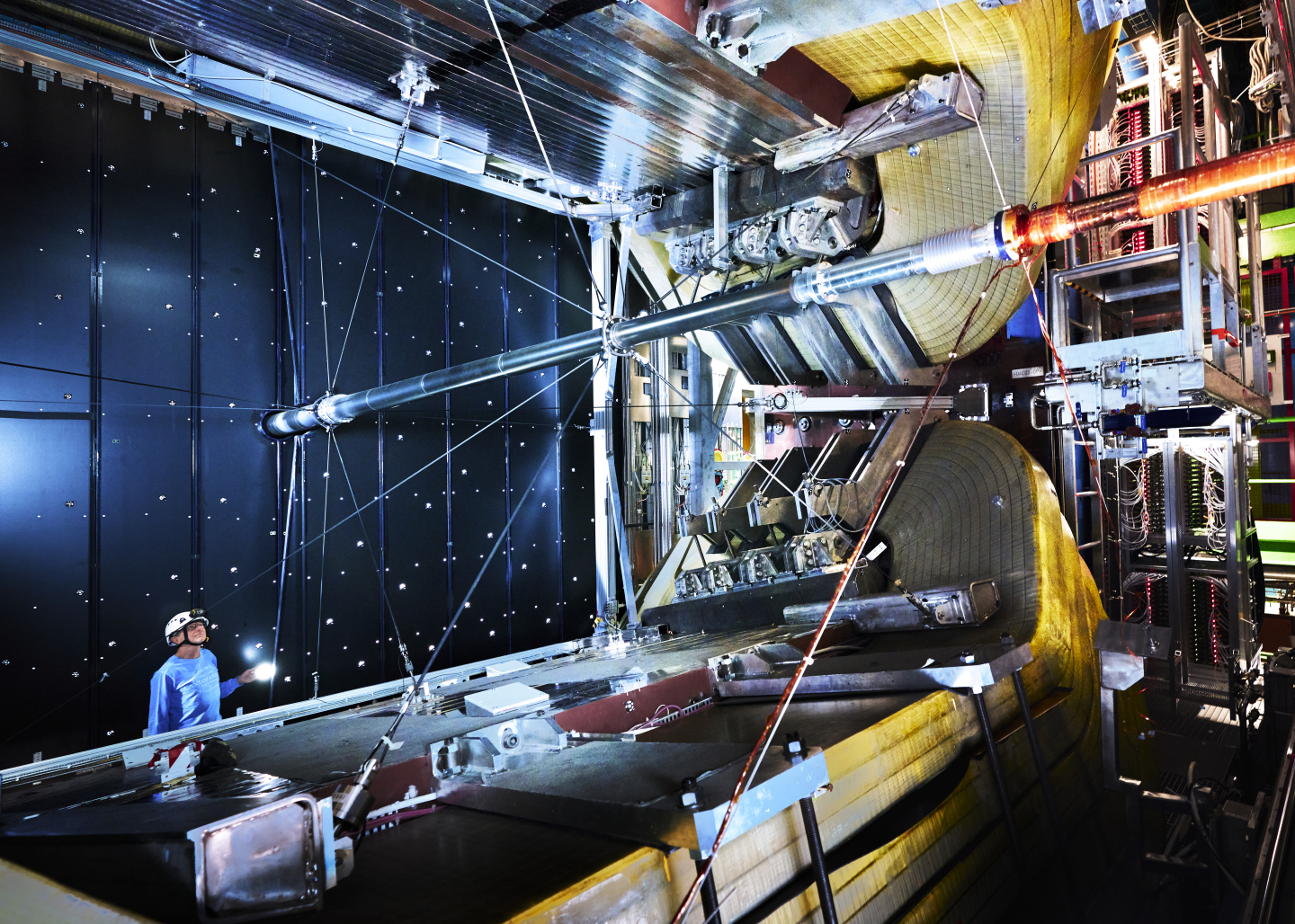LHCb tightens precision on key measurements of matter–antimatter asymmetry
The LHCb collaboration’s new measurements of matter–antimatter asymmetry in decays of beauty particles are the most precise yet of their kind.
The Big Bang is thought to have created equal amounts of matter and antimatter, yet the Universe today is made almost entirely of matter, so something must have happened to create this imbalance.
The weak force of the Standard Model of particle physics is known to induce a behavioural difference between matter and antimatter – known as CP symmetry violation – in decays of particles containing quarks, one of the building blocks of matter. But these differences, or asymmetries, are hard to measure and insufficient to explain the matter–antimatter imbalance in the present-day Universe, prompting physicists to both measure precisely the known differences and to look for new ones.
At a seminar held at CERN on 13 June 2023, the LHCb collaboration reported how it has measured, more precisely than ever before, two key parameters that determine such matter–antimatter asymmetries.
In 1964, James Cronin and Val Fitch discovered CP symmetry violation through their pioneering experiment at Brookhaven National Laboratory in the US, using decays of particles containing strange quarks. This finding challenged the long-held belief in this symmetry of nature and earned Cronin and Fitch the Nobel Prize in Physics in 1980.
In 2001, the BaBar experiment in the US and the Belle experiment in Japan confirmed the existence of CP violation in decays of beauty mesons, particles with a beauty quark, solidifying our understanding of the nature of this phenomenon. This achievement ignited intense research efforts to further understand the mechanisms behind CP violation. In 2008, Makoto Kobayashi and Toshihide Maskawa received the Nobel Prize in Physics for their theoretical framework that elegantly explained the observed CP violation phenomena.


